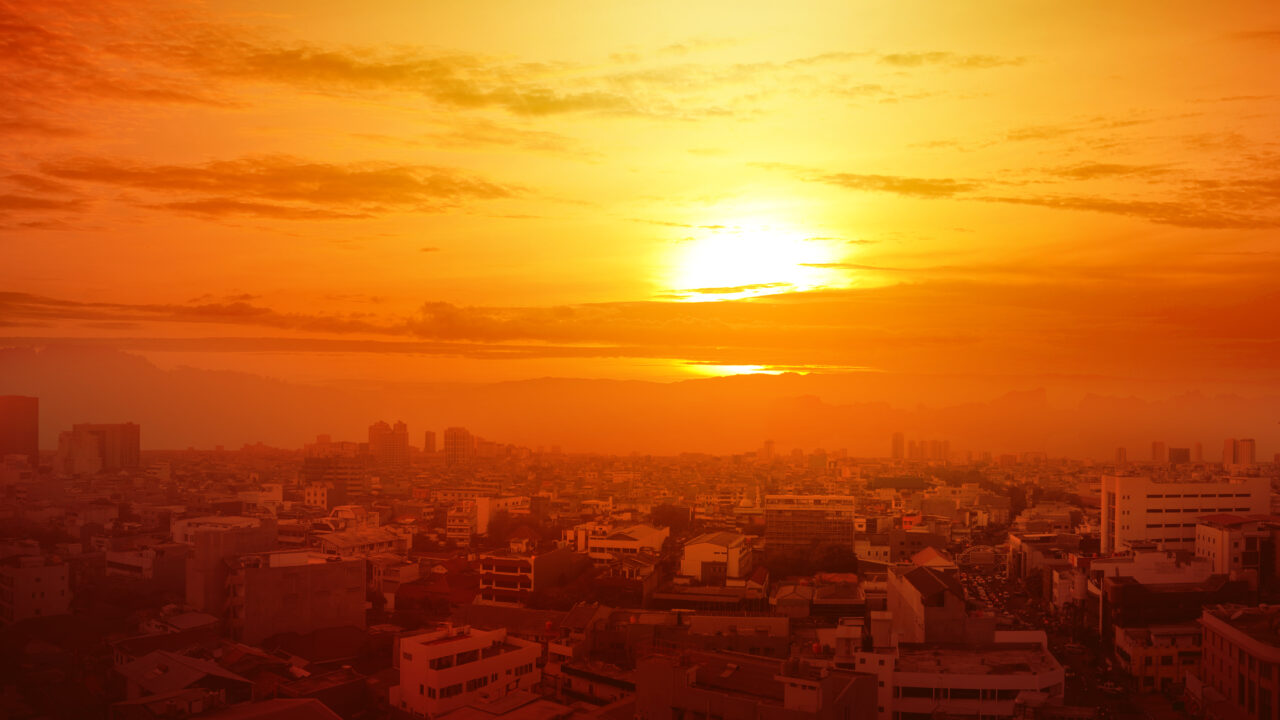41 Million Americans Are Simmering on Urban Heat Islands
New research says reducing paved surfaces and increasing green space could cool cities down. Image: Adobe
Image: Adobe
Try walking outside on a midsummer day in New York City. You’re sweating buckets. You can smell garbage rotting by the side of the road. The sunlight and heat seem to reflect from the steaming pavement, which is so hot to the touch it burns your skin.
That’s an example of the urban heat island effect – a well-known phenomenon in which cityscapes, particularly those without much in the way of trees or shade, tend to amplify and reflect heat, turning temperatures up by a magnitude of 8 degrees or higher. It can cause public-health problems in any city, making people sick with deadly heat exhaustion and heatstroke.
A study out Wednesday from Climate Central, a nonprofit research organization, analyzed the urban heat island index of 18,945 census tracts in 44 major U.S. cities, home to nearly a quarter of the country’s population, breaking the data down by neighborhood to show “heat maps” of the cities involved. It’s not only a piece of research, but also potentially a tool cities could use to identify environmental inequities and target investment in order to solve them.
Overall, nine cities have more than 1 million people at risk of having to endure an extra 8 degrees because of the heat island effect
In particular, urban neighborhoods in large cities like New York, Chicago, San Francisco, and Miami were vulnerable to the worst of the urban heat island effect. Overall, nine cities have more than 1 million people at risk of having to endure an extra 8 degrees because of the heat island effect; across all 44 cities in the study, the tally is 41 million.
Peter Girard, the vice president of communications at Climate Central, says the “heat maps” should be used as a tool for solutions. There are simple fixes: more tree cover and vegetation, lighter paint on rooftops, rooftop gardens, and other measures can reduce the urban heat island effect and make cities both more bearable and more pedestrian friendly.
This study comes on the heels of the hottest June as well as the hottest days and weeks in recorded history, with deadly heat domes stagnant over much of the world, including the U.S. Southwest. Cities like Phoenix, are currently experiencing temperatures over 110 degrees Fahrenheit, and the heat is killing people.
Though the study does not specifically discuss the long-term effects of race and class discrimination on the urban heat island effect, Girard says it’s an important part of the discussion.
“The hottest spots in these cities … are very, very frequently associated with black and brown, low income communities – people with social vulnerability,” said Girard.
According to the Environmental Protection Agency, historic redlining is associated with urban heat islands today. Reducing inequities could mean investing in green space, creating more shade, and using “cool pavement,” a technology being piloted by the city of Phoenix, Arizona.
And there’s one big thing people can do to reduce the heat island effect, Girard said. “The only real solution is reducing global warming altogether.”
Your support matters…Independent journalism is under threat and overshadowed by heavily funded mainstream media.
You can help level the playing field. Become a member.
Your tax-deductible contribution keeps us digging beneath the headlines to give you thought-provoking, investigative reporting and analysis that unearths what's really happening- without compromise.
Give today to support our courageous, independent journalists.






You need to be a supporter to comment.
There are currently no responses to this article.
Be the first to respond.